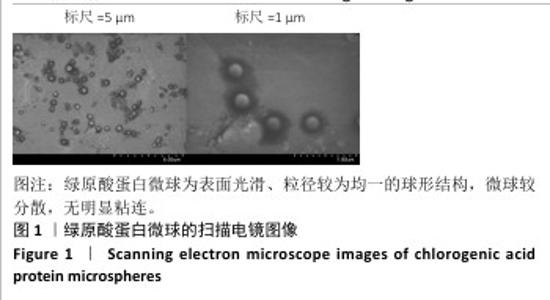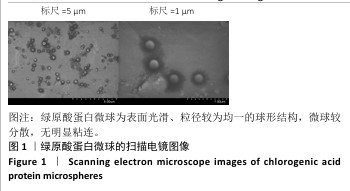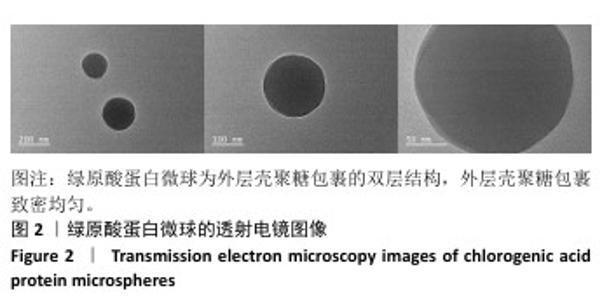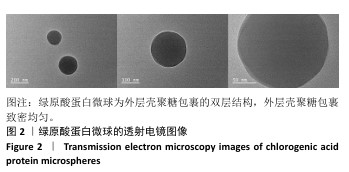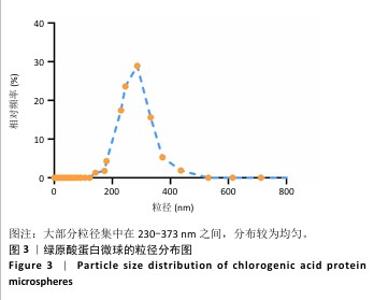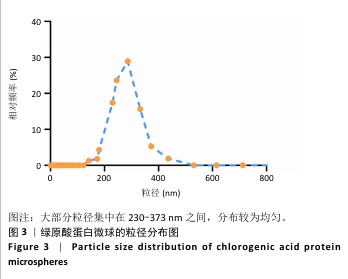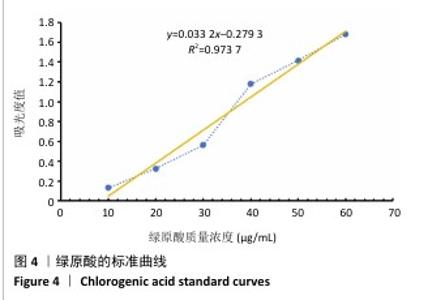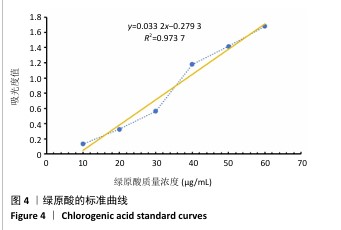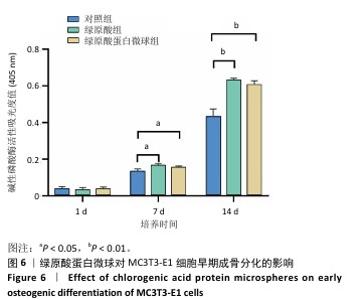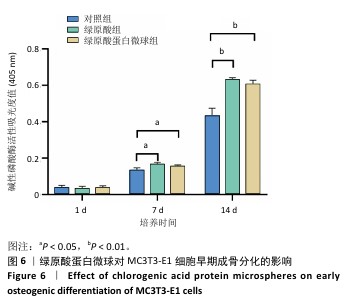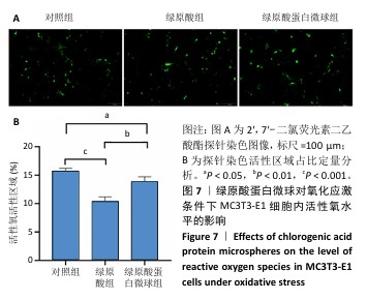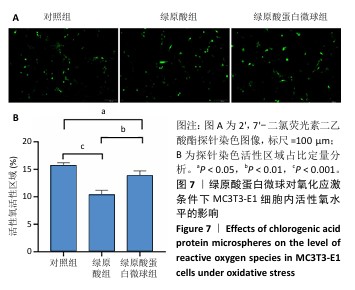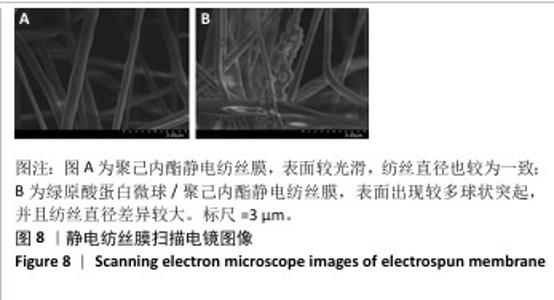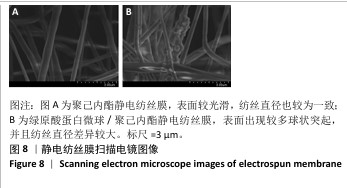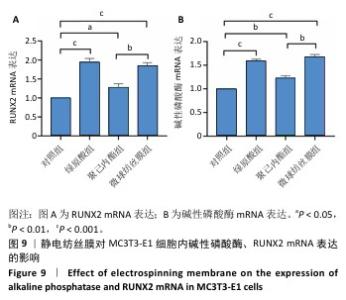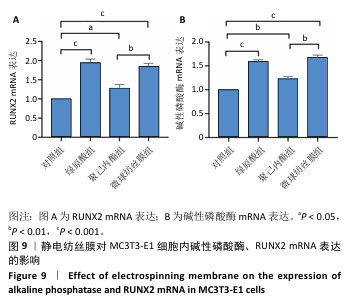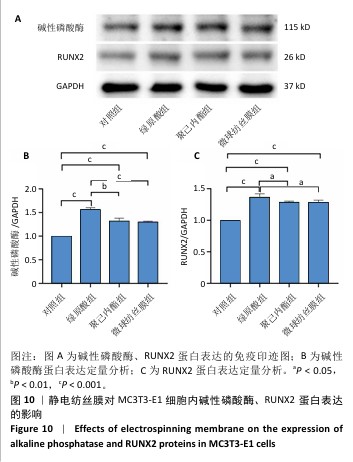[1] 王明娟,陈晨,谢海峰.钛表面绿原酸涂层在高糖环境下的成骨潜能[J].口腔生物医学,2024,15(6):322-327.
[2] NAVEED M, HEJAZI V, ABBAS M, et al. Chlorogenic acid (CGA): A pharmacological review and call for further research. Biomed Pharmacother. 2018;97:67-74.
[3] 朱灿,何家恒,陈迟迟,等.绿原酸促进成骨前体细胞成骨分化的作用[J].中国组织工程研究,2023,27(14):2170-2175.
[4] HO CY, TANG CH, HO TL, et al. Chlorogenic acid prevents ovariectomized-induced bone loss by facilitating osteoblast functions and suppressing osteoclast formation. Aging (Albany NY). 2024;16(5): 4832-4840.
[5] NAVARRO-ORCAJADA S, MATENCIO A, VICENTE-HERRERO C, et al. Study of the fluorescence and interaction between cyclodextrins and neochlorogenic acid, in comparison with chlorogenic acid. Sci Rep. 2021;11(1):3275.
[6] WEI D, YANG H, ZHANG Y, et al. Nano-traditional Chinese medicine: a promising strategy and its recent advances. J Mater Chem B. 2022; 10(16):2973-2994.
[7] WANG Y, ZHANG Y, ZHONG H, et al. Construction of a non-toxic interpenetrating network hydrogel drug carrier supported by carbon microspheres and nanocellulose. Carbohydr Polym. 2025;350:123035.
[8] ALMEIDA B, NAG OK, ROGERS KE, et al. Recent Progress in Bioconjugation Strategies for Liposome-Mediated Drug Delivery. Molecules. 2020;25(23):5672.
[9] PAGNI G, TAVELLI L, RASPERINI G. The Evolution of Surgical Techniques and Biomaterials for Periodontal Regeneration. Dent Clin North Am. 2022;66(1):75-85.
[10] MIZRAJI G, DAVIDZOHN A, GURSOY M, et al. Membrane barriers for guided bone regeneration: An overview of available biomaterials. Periodontol 2000. 2023;93(1):56-76.
[11] 范金波,李鑫芮,葛春辉,等.荧光光谱法研究绿原酸与胰脂肪酶相互作用[J].食品与发酵科技,2017,53(6):106-110.
[12] LI DY, YU JC, XIAO L, et al. Autophagy attenuates the oxidative stress-induced apoptosis of Mc3T3-E1 osteoblasts. Eur Rev Med Pharmacol Sci. 2017;21(24):5548-5556.
[13] JOLY N, SOUIDI K, DEPRAETERE D, et al. Potato By-Products as a Source of Natural Chlorogenic Acids and Phenolic Compounds: Extraction, Characterization, and Antioxidant Capacity. Molecules. 2020;26(1):177.
[14] 夏琳,徐向丽,王雪云,等.植物绿原酸生物合成研究进展[J].生物技术进展,2024,14(6):973-979.
[15] KESKIN C, ÖLÇEKÇI A, BARAN A, et al. Green synthesis of silver nanoparticles mediated Diospyros kaki L. (Persimmon): determination of chemical composition and evaluation of their antimicrobials and anticancer activities. Front Chem. 2023;11:1187808.
[16] 韩丹丹.绿原酸对地塞米松诱导小鼠MC3T3-E1成骨细胞凋亡的保护机制[D].北京:中国农业大学,2018.
[17] LI H, XU J, HU JF, et al. Sustained release of chlorogenic acid-loaded nanomicelles alleviates bone loss in mouse periodontitis. Biomater Sci. 2022;10(19):5583-5595.
[18] FOLWARCZNA J, PYTLIK M, ZYCH M, et al. Effects of caffeic and chlorogenic acids on the rat skeletal system. Eur Rev Med Pharmacol Sci. 2015;19(4):682-693.
[19] NAM SH, KO JA, JUN W, et al. Enzymatic synthesis of chlorogenic acid glucoside using dextransucrase and its physical and functional properties. Enzyme Microb Technol. 2017;107:15-21.
[20] KITAGAWA S, YOSHII K, MORITA SY, et al. Efficient topical delivery of chlorogenic acid by an oil-in-water microemulsion to protect skin against UV-induced damage. Chem Pharm Bull (Tokyo). 2011;59(6):793-796.
[21] RUI L, XIE M, HU B, et al. Enhanced solubility and antioxidant activity of chlorogenic acid-chitosan conjugates due to the conjugation of chitosan with chlorogenic acid. Carbohydr Polym. 2017;170:206-216.
[22] WANG Y, CHEN S, YANG X, et al. Preparation Optimization of Bovine Serum Albumin Nanoparticles and Its Application for siRNA Delivery. Drug Des Devel Ther. 2021;15:1531-1547.
[23] GAO X, LIU N, WANG Z, et al. Development and Optimization of Chitosan Nanoparticle-Based Intranasal Vaccine Carrier. Molecules. 2021;27(1):204.
[24] XU C, XU J, XIAO L, et al. Double-layered microsphere based dual growth factor delivery system for guided bone regeneration. RSC Adv. 2018;8(30):16503-16512.
[25] ZHANG Y, NIU Y, LUO Y, et al. Fabrication, characterization and antimicrobial activities of thymol-loaded zein nanoparticles stabilized by sodium caseinate-chitosan hydrochloride double layers. Food Chem. 2014;142:269-275.
[26] HAN D, CHEN W, GU X, et al. Cytoprotective effect of chlorogenic acid against hydrogen peroxide-induced oxidative stress in MC3T3-E1 cells through PI3K/Akt-mediated Nrf2/HO-1 signaling pathway. Oncotarget. 2017;8(9):14680-14692.
[27] HAN J, XIE N, JU J, et al. Developments of electrospinning technology in membrane bioreactor: A review. Chemosphere. 2024;364:143091.
[28] XUE J, WU T, DAI Y, et al. Electrospinning and Electrospun Nanofibers: Methods, Materials, and Applications. Chem Rev. 2019;119(8):5298-5415.
[29] SIDDIQUI N, KISHORI B, RAO S, et al. Electropsun Polycaprolactone Fibres in Bone Tissue Engineering: A Review. Mol Biotechnol. 2021; 63(5):363-388.
[30] BACKES EH, HARB SV, BEATRICE CAG, et al. Polycaprolactone usage in additive manufacturing strategies for tissue engineering applications: A review. J Biomed Mater Res B Appl Biomater. 2022;110(6):1479-1503.
[31] LIU H, GOUGH CR, DENG Q, et al. Recent Advances in Electrospun Sustainable Composites for Biomedical, Environmental, Energy, and Packaging Applications. Int J Mol Sci. 2020;21(11):4019. |
